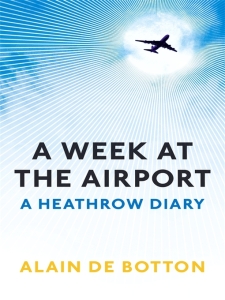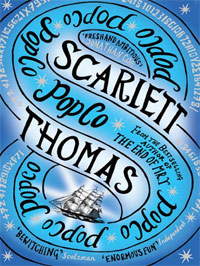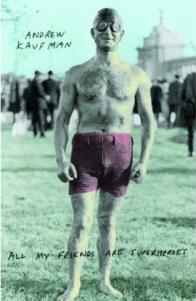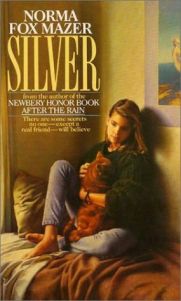Judging by the popularity of the T Mobile advert set in Heathrow, and how Love, Actually starts and finishes with Hugh Grant’s musings in that same (I assume) airport, I’m hardly alone in finding these transportation hubs fascinating. There’s just something about watching people you’ll probably never see again, flying to destinations you’ve never heard of, to do something you’ll never know about. This interest may have led to a minor obsession with attributing random stories to strangers in airports (and on other forms of public transport. People of the UK beware, you’re having new lives created for you). It has also meant that I’ve been interested in reading Alain de Botton’s A Week at the Airport for some time. So a recent plane flight to New York, flying out of Heathrow’s Terminal 5 (in which the book is set) was the perfect motivation to finally get it downloaded.
Shortly after BA’s shiny new terminal opened, Alain de Botton was given unrestricted access to this area of Heathrow as its official ‘Writer in Residence’. Although this was apparently paid for by BAA, reviews suggest that de Botton only undertook the assignment on the basis that his writing couldn’t be censored (though there is really nothing here they’d have wanted to remove, anyway). This short book (it’s just 112 pages. Or, in Kindle terms, your percentage of book read seems to increase with every other click of a page-turning button) focuses on the airport staff, pilots and the passengers on their fleeting (though it might not always seem that way) visits to the terminal. It covers what happens to baggage after check-in, the side of immigration most of us will never see and many other aspects of an airport that would have otherwise passed me – and others, I’m sure – by completely.
This book was my first introduction to Alain de Botton and I wasn’t quite sure what to expect. Perhaps quite stupidly, de Botton being known for his philosophical style, I wasn’t expecting the book to be quite so, well, philosophical. As such, towards the beginning I wasn’t quite sure whether I liked the book or not. It was certainly interesting, but was I enjoying it? But as he became more involved in Heathrow, I became more involved in his book. Increasing numbers of stories about people crept in – similar to those ones I go and make up myself, except I’m pretty sure most of these were actually true. Then there were the interviews with a variety of employees as well as passengers. Observations such as his changed preconceptions of the people that haunt Executive lounges. This was exactly what I’d been hoping for from the book, and by the end I was completely gripped. I should also point out that my inability to delve straight into the book was more a matter of expectation and personal taste, as opposed to a reflection on the quality of the book itself.
That said, considering the oh-so-short (almost too short) length of the book, some parts seemed unnecessarily wordy. I like a good description, but (although this blog suggests otherwise) am also from the school of ‘two words can have as big an impact as five’ and I did occasionally – especially towards the beginning – find some of the descriptions a little superfluous. However this didn’t detract from my overall enjoyment of the book, and it certainly wouldn’t stop me recommending it to others.
I also feel like I may have missed out a bit on the quality and detail of the photographs by reading the Kindle version. To be expected, of course, but if I’d realised quite how many there were then I’d probably have considered buying the ‘real’ version instead.
Overall though, I really enjoyed this book, and found myself thoroughly absorbed by the world of Heathrow’s Terminal 5. It certainly added an extra dimension to my time in the departure lounge there. A recommended read for anyone hitting the airports over the coming bank holidays and for those who join me in attributing stories to strangers sharing transport with you. I know I’m not the only one. A read you can fly away with (…sorry).





